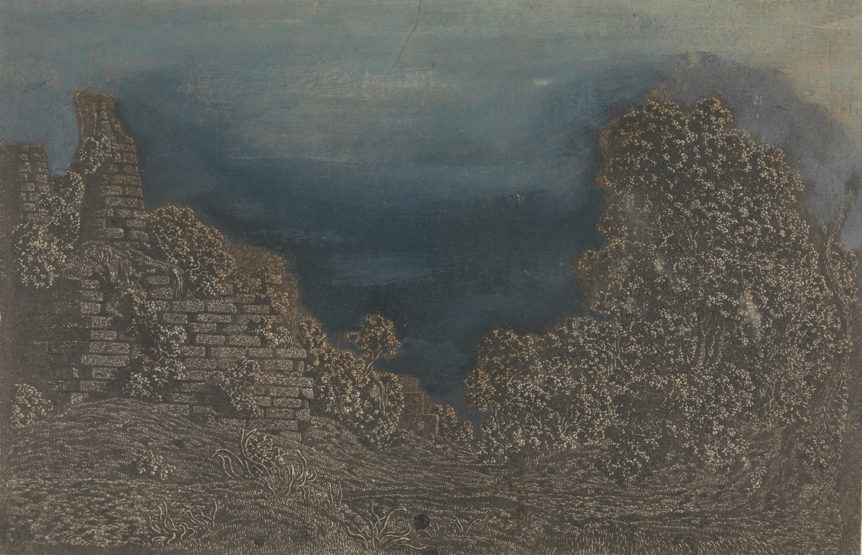
The Tombs of the Horatii and Curatii by Hercules Segers, c. 1628–1629. Rijksmuseum, Amsterdam, on loan from the City of Amsterdam, collection Michiel Hinloopen.
The Flemish artist Hercules Segers—now the recipient of his first exhibition in America, on view at the Metropolitan Museum of Art in New York—was probably the oddest European painter and printmaker of the seventeenth century. Born in 1589 in Haarlem, he was an apprentice in the workshop of Gillis van Coninxloo, a late mannerist who specialized in biblical and mythological landscapes. Although Segers lived well past the age of Mannerism (he died about 1638), he never abandoned its love of exorbitance—a refusal to follow rules and norms—which seems to have squared with the reclusive oddity of his nature. Although in one sense the images at the Met are only representations of what Segers saw out his window, they are infused with a dreaminess, even a drugged or opiated haze, that recalls the work of such symbolist painters as Gustave Moreau or Odilon Redon, working two centuries later. Especially in the perspectives of his prints and etchings, he favors a highly artificial flatness, a feeling enhanced by his revolutionary innovation of coloring them with washes of lavender and absinthe. The result is not so much landscapes as moonscapes. It is no wonder that Rembrandt loved and collected this artist and was, in his own landscapes, greatly influenced by him.
The Mysterious Landscapes of Hercules Segers • Metropolitan Museum of Art • to May 21 • metmuseum.org

